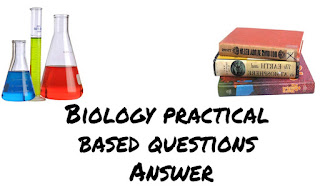Practical based questions
1. Which acid is used to detect metanial yellow in dal?
Ans: Hydrochloride acid
2. Whai is metanial yellow? Name two food items in which metanial yellow is mixed
Ans: Metanial yellow is a dye used for adultering food items. Two food items which are adulterated with metanial yellow are turmeric and gram dal.
3. Which chemical gives blue black colour with starch?
Ans: Iodine
4. What is an adulterant?
Ans: The cheaper material mixed with superior food items is called adulterant.
5. Which food sample is ideal for starch test ?
Ans: Rice
6. Which colour indicates that the food item is mixed with metanial yellow after adding HCL to it?
Ans: Pink
7. In which colloidal solution both the dispersed phase and the dispersion medium are liquids?
Ans: Milk mixed with water.
8. What is alum?
Ans: Alum is a double salt of potassium sulphate and aluminium sulphate.
9. What is a colloidal solution?
Ans: A solution in which the solute particles neither dissolve nor settle down in a solvent is a colloidal solution.
10. What is a suspension?
Ans: A suspension is a solution in which the solute particles settles down and clear water collects above it.
11. What is a true solution?
Ans: A solution in which solute particles are not visible by naked eye is a true solution.
12. What is a mixture?
Ans: When two or more substances are mixed together in any ratio , such that they do not react chemically and can be separated by physical means is called a mixture.
13. What is a heterogeneous mixture?
Ans: A mixture in which the solute particles are not mixed completely with the solvent is a heterogeneous mixture.
14. What is a homogeneous mixture?
Ans: A mixture in which the solute particles gets completely mixed with the sovent is called homogeneous mixture.
15. What is a compound?
Ans: A compound is a pure substance formed by combination of two or more elements in a fixed ratio, such that they can be separated only by chemical means.
16. What is the smell of hydrogen sulphide (H2S)?
Ans: Rotten eggs.
17. How does iron(Fe) and sulphur(S) react?
Ans: Iron and sulphur when heated at high temperature forms iron sulphide.
18. What do you observe when sulphur powder is mixed with sand?
Ans: It forms heterogeneous mixture as the particles of sand and sulphur can be seen clearly.
19. A mixture of sand, ammonium chloride and iodine is heated in a china dish. What will change into vapour and why? What will be left in the china dish?
Ans: Ammonium chloride and iodine will change into vapour as they sublime on heating. Sand will be left in the china dish.
20. What is the colour of copper sulphate crystals?
Ans: Blue
21. What happens when copper sulphate crystals are heated?
Ans: They form white powdery mass which is called anhydrous copper sulphate and
give out large amount of steam from the water of crystallisation present in hydrated copper sulphate crystals
22. What happens if iron metal comes in contact with aqueous copper sulphate solution?
Ans: It displaces copper ions to form copper atoms and itself undergo a chemical reaction to form ferrous sulphate.
23. Which reaction takes place when sodium sulphate solution reacts with barium chloride solution?
Ans: A chemical double displacement reaction takes place, with the exchange of ions which results in the formation of sodium chloride solution and a precipitate of barium sulphate.
24. What is the colour of the precipitate formed when barium chloride solution is mixed with sodium sulphate solution?
Ans:White
25. What makes copper sulphate solution blue in colour?
Ans: Presence of Cu2+ ions.
